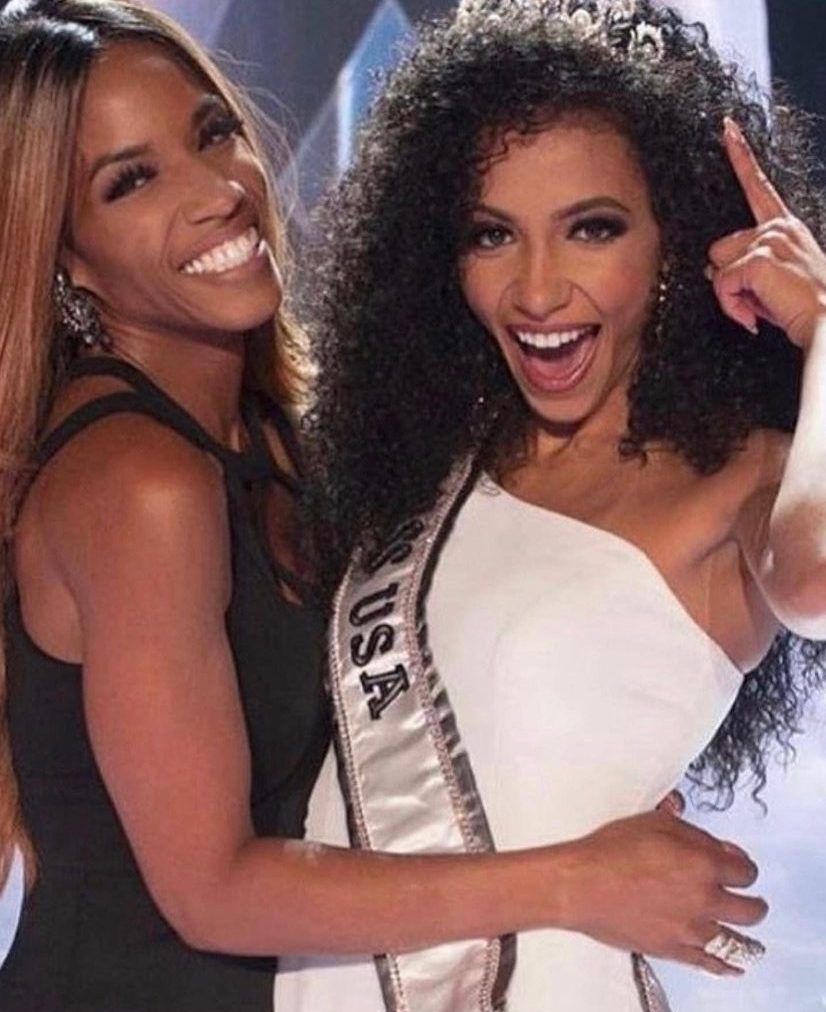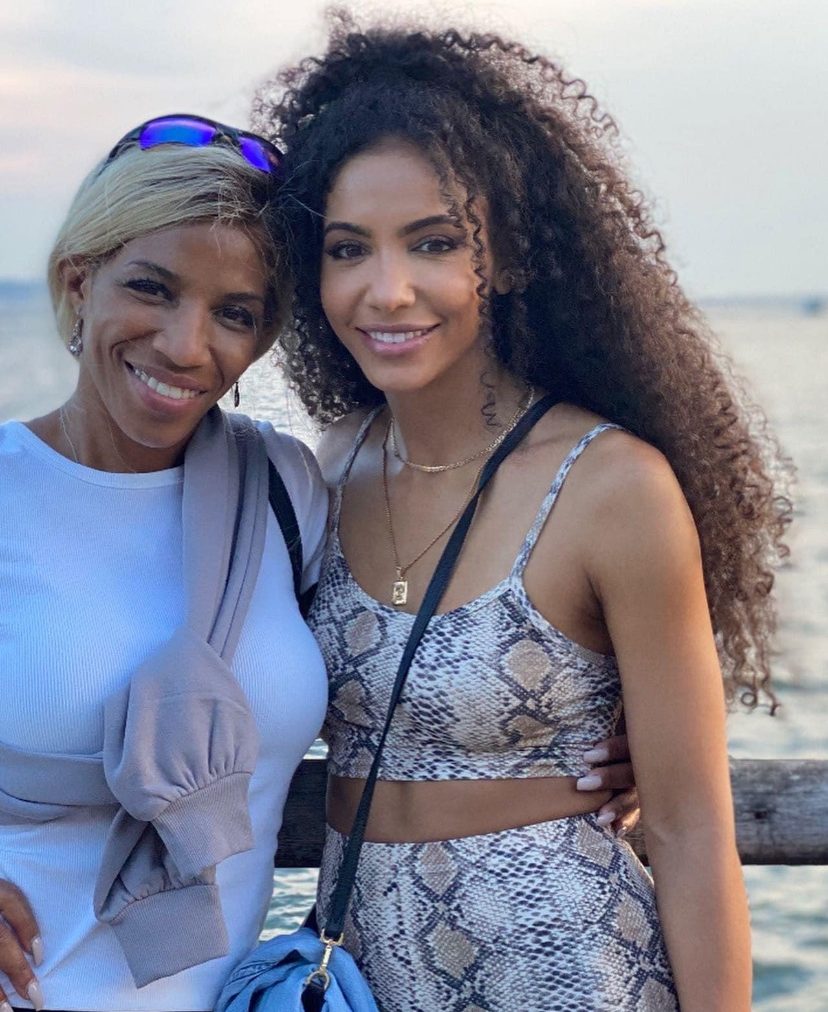
It’s an idea that in one form or another has been repeated again and again. Cheslie Kryst had so much. She seemed so happy. She didn’t fit the mold of someone who dies by suicide.
Kryst, an entertainment reporter, former lawyer, and Miss USA 2019, was a successful young Black woman in a country that often assumes suicide primarily affects white, visibly depressed middle-aged men, the Willy Lomans who populate American culture. So the shock that followed news of her death Sunday—which the New York medical examiner confirmed to be caused by suicide—was predictable. It also revealed a dangerous gap between reality and what many believe about suicide and prevention in the United States.
It’s true that, in raw numbers, white men account for more suicide deaths in the U.S. than any other demographic group. But that obscures a more complicated picture. Suicide rates are actually highest among American Indian/Alaska Native people, according to U.S. Centers for Disease Control and Prevention (CDC) data—something rarely mentioned in conversations about suicide. What’s more, the most recent CDC data available suggest that, following years of increases across demographic groups, suicide rates among white people in the U.S. declined from 2019 to 2020, contributing to a 3% overall drop in suicide deaths in that time period. But there were no statistically significant declines in suicide rates for Black Americans, or other Americans of color; in fact, for some racial or ethnic groups, rates increased from 2019 to 2020. Among Black youth and young adults in particular, suicide rates have climbed steadily over the past two decades.
When a high-profile, successful, young Black woman like Kryst dies by suicide, “these things are brought to the limelight of the public,” says Michelle Vance, an assistant professor of social work and sociology at the North Carolina Agricultural and Technical State University who recently co-authored a paper on suicide among Black women. “But these things are happening every single day in our communities.”
Misunderstanding the ways in which suicide affects Americans of color can lead to confusion—not just among members of the public, grieving family, and friends, but also practitioners who may be used to assessing suicide risk through a lens of whiteness, Vance says. Frequently, as has been the case in the days after Kryst’s death, inaccurate ideas about suicide and suicidal thinking are repeated, potentially contributing to future situations in which those at risk go unnoticed by peers and professionals alike.
“I’ve been searching my brain thinking, What did I miss? What did I not see?” CBS This Morning host Gayle King, who was a mentor and friend to Kryst, told TIME, recalling a final conversation the two shared in December. “How could I miss the signs? There were no signs. That’s the truth.”

That mismatch between presentation and risk is not uncommon, says Rheeda Walker, a clinical psychologist and professor of psychology who directs the University of Houston’s Culture Risk and Resilience Lab. (Those who know someone who dies by suicide, particularly someone who masked their pain or did not comport with common ideas about mental health crisis, often feel guilty, Walker says, but should give themselves some grace as they grieve. Prevention is a long-term activity, rarely possible in the final crisis.)
“She was a very high-functioning individual. So people assume. She doesn’t present like someone who is depressed and downtrodden,” Walker says. “But two things come to mind for me: When we work with clinical patients, oftentimes the ones who are least depressed are the ones actually who give me the most pause…. The other thing is that people oftentimes don’t look like what they are going through.”
Read more: Suicide Among Black Girls Is a Mental Health Crisis Hiding in Plain Sight
While suicide has long been viewed as an affliction of middle age, among people of color in the United States, those 30 and under are at greatest risk. And warning signs of suicide risk may show up differently in younger populations and across racial and ethnic groups. As Lillian Polanco-Roman, an associate professor of psychology at the New School for Social Research, points out, data that compare suicide rates among older populations suggest that fewer Black people die by suicide, as if there were something guarding them from it, while failing to capture the reality of what is happening before people reach that age.
“The narrative, how it has been spun before is ‘oh, communities of color have this protective factor,’” she says. But in fact, “those who are most vulnerable…they’re not caught by our safety nets. They don’t get that extension in life to make it to middle age.”

A research letter published in 2021 found that, from 2014 to 2019, suicide rates among Black people in the U.S. increased by 30%, even as rates among white people began to drop by the end of that time period. Among children, the trends have been even more startling, especially among Black girls, for whom suicide death rates increased by 182% from 2001 to 2017, according to a study published in 2019. Suicide attempts among Black youth of all genders have also grown more frequent in recent years, according to a 2019 study published in Pediatrics.
A delay in statistical reporting makes it difficult to say with authority how the pandemic may have affected the situation. Still, some studies help fill in the gaps. For example, an international 2021 research review incorporating data from 54 studies concluded that suicidal thinking and behavior has become more common during the pandemic than before it, particularly among young people and women. Studies have also shown that rates of depression and anxiety—both of which are considered risk factors for suicide—were higher in 2021 versus 2020, particularly among people of color. According to CDC data from January and February 2021, more than 41% of U.S. adults said they’d felt symptoms of depression or anxiety in the past week, compared to 36% in the summer of 2020. What’s more, 47% of Hispanic/Latino adults and nearly 45% for Black adults said they’d experienced recent depression or anxiety in the 2021 survey.
Another paper, published in the Lancet Regional Health—Americas, found that almost a third of U.S. adults reported elevated symptoms of depression in the spring of 2021. Depressive signs were most common among people in low-income households and those who experienced multiple stressors related to the COVID-19 pandemic, such as job loss or death of a loved one. Those stressors have not been equally distributed: In the early days of the pandemic in particular, people of color in the U.S. died from COVID-19 at significantly higher rates than white people. As of June 2020, 31% of Black Americans and 17% of Hispanic Americans said they knew someone who had died from COVID-19, compared to just 9% of white Americans. And as of May 2021, about 40% of Black adults said someone in their household had lost a job or wages due to the pandemic.
It would be easy to say that changes in suicide risk in the Black America have crept up on the country, Polanco-Roman says. But research going back decades showed an increase in suicide among young Black men from the 1960s to the 1990s, followed by a decade-long decrease and stabilization—and then, in the 2000s, another increase among all groups, with a disproportionate share of the growth occurring among younger Latino, Native, Asian, and Black Americans. Even before the pandemic, suicide risk among people of color in the United States was concentrated among the young. (In fact, Polanco-Roman notes, the data for Americans of color look more like those for suicide risk in low- and middle-income countries in Latin America and Africa, where rates are highest among young people—suggesting that those countries may be a valuable source of information and guidance.)
“Culture, environment influences suicide risk,” says Polanco-Roman, “That, I think, is recognized. But to what extent and in what ways, we still need more research.”
Limited research and understanding of these facts may be causing public health officials and the general public to fritter away opportunities to intervene and keep young people of color alive.
Research informs treatment, public health interventions and even what the public understands about suicide risk. In the United States there’s been significant conversation about firearms access and suicide risk, for example; that focus may help to save the lives of middle-aged men in particular, who are more likely to die after using a firearm. But young Americans who die by suicide are more likely to use other methods, which have not received the same level of attention.
It’s no coincidence that efforts to prevent suicide in Black communities remain less effective than they could be.
“We are working on improving our suicide prevention strategies, and our suicide intervention, but we are not centering other lived experiences, namely those [of people] who are not white,” says Polanco-Roman. “Our prevention strategies are not culturally responsive. They’re most responsive to white populations, who are better represented in the research that we carry out.”
Read more: A Movement Against Racism Should Be a Movement for Mental Health
The assumption that suicide can be addressed in universal ways is one problem. Systemic racism also plays a significant role in the failures of suicide prevention. It shapes who has access to quality mental health services, and other social resources such as education, quality housing, and employment, as well as who is exposed to violence, unemployment, hunger, abuse and other chronic stressors that compromise mental health and development over the course of a person’s life.
Suicide is highly complex phenomenon. Though people who die by suicide may experience traumatic experiences leading up to their deaths, there is rarely a single cause or trigger; some people may not even exhibit what most consider visible warning signs. Still, suicide is preventable with the right mixture of interventions and ongoing support. The American Psychiatric Association has found that access to mental and physical health care is a buffer against suicidal thinking and behavior, along with social and community support.
It is particularly devastating, then, that in the U.S., mental health care is least accessible to people of color, who are known to face a disproportionate amount of stress and trauma. As of 2019, about 20% of the white U.S. adult population received mental health care, while less than 10% of adults identifying as Black, Hispanic, Asian, or Pacific Islander/Native Hawaiian did. (Interestingly, 7.1% of white Americans still said they had an unmet mental health need, a higher percentage than any other single racial or ethnic group.) Research has also shown that children and teenagers of color are less likely to have received mental health care before dying by suicide, compared to white youth.
The pandemic did little to eliminate those disparities. While the rise of teletherapy helped some people connect with a mental health practitioner for the first time, relatively high earners and white people reported the largest jumps in telehealth usage through spring 2021. Whether online or in person, care is still out of reach to many people due to cost, difficulty finding providers who accept insurance, and a glaring lack of clinicians of color, to name only a few barriers.
“Socioeconomic status is not the whole story,” says Dr. Amanda Calhoun, a psychiatry resident affiliated with the Yale School of Medicine. There are plenty of people of color who can easily find and afford treatment. Finding a therapist who understands their lived experience and “what it is to be a person of color in America” is much harder—not only because psychiatry is a predominantly white field, but also because medical schools offer limited training on the intersection of race and mental health, Calhoun says. “You could be alienating many Black people who have the means to access the mental health system, but they frankly don’t trust it,” she says. That will likely continue to be the case until the medical system learns to attract people from all backgrounds and offer comprehensive training that goes beyond the experiences of white Americans.
Read more: Teletherapy Aimed to Make Mental Health Care More Inclusive. The Data Show a Different Story
These are not inherently intractable social phenomena beyond human control. They are the results of decisions made about research funding, housing, education, food, health care, and other policies. When the pandemic arrived in a country that made those decisions, it rendered the suicide-risk mitigation strategies that involve our private lives, rather than clinical settings, all the more important. For Black women, research suggests that list of mental-health protections includes things like close personal ties, hugging, and frequent physical contact with family and friends, Walker says. Church attendance or maintaining a spiritual practice and sense of belonging or connection to a community. The ability to go to happy hour with coworkers and talk about a boss who hands out discrimination as often as assignments. But in the pandemic, much of that became physically dangerous.
“It really is multi-layered,” Walker says. “Why I do the work that I do is that people habituate to this pain. A lot of folks are struggling. But most folks aren’t going to try to take their lives. And for me I know that it’s because of what we call protective factors, the psychological buffers. It’s all of that that usually provides this kind of layer of protection.”
Some of those layers were already eroding before the pandemic, Walker says. And that’s something worth talking about and working to repair, she says. That’s a form of public health work, stuff that keeps people alive. It’s also practical and in the individual’s control.
“I don’t think we can do much about the other risk factors in the short term,” Walker says. “You know, between racism and microaggressions, what you gon’ do?”
Cheslie Kryst was a woman with a bachelor’s degree, a law degree, and an MBA. She practiced law and did pro bono work that ultimately liberated a man convicted of drug charges from a life prison sentence. She served as Miss USA and unapologetically appeared on stage with natural, curly hair and a more muscular body—shaped by years as a Division I college athlete—than the typical pageant contestant. She then switched careers and quickly won two Daytime Emmy awards. “She was a sparkle. I called her walking sunshine,” Gayle King says.

Kryst had also publicly described talking with a counselor and exercise as essential to her mental health; in a statement released on Wednesday, her mother said she was living with “high-functioning depression,” a term that the University of Houston’s Walker says is not a precise medical diagnosis but an apt way to describe real pain that the sufferer is able to mask. Beyond that, there is much we do not know and cannot know about Kryst’s experiences.
What we do know is that the effects of overlapping racism and sexism may amplify stressful experiences. In some cases, they become risk factors for suicidal behavior, Vance and her co-author Jeannette Wade, an assistant professor of sociology at North Carolina Agricultural and Technical State University, concluded in their recent paper, published in the Journal of Racial and Ethnic Health Disparities. “When you take the idea of being a Black woman and having to live in a sexist society, a racist society, and then add things like having to head a household…that is creating a unique risk,” Wade says.
At the same time, Black women are often expected in their friend and family circles to operate like unshakable trees planted beside the water, deeply-rooted and able to weather any storm, Walker says. And the way that racism and sexism combine often forces these same women to present themselves publicly as not only unflappable, but capable of superhuman feats. It’s what a society like this one requires of them simply to be regarded as fully human by others.
One of the most widely cited theories of suicide—known as Joiner’s theory, named for the clinical psychologist who developed it—holds that three things are consistently present among those who die by suicide, Walker says. The first is the sense that one does not belong. The second is the individual feels or believes themselves to be a burden to others. The third is the capacity to overcome the powerful human instinct to survive, the ability to intentionally and seriously injure oneself. But those factors are not always the only considerations: Subsequent research that Walker, Jasmin R. Brooks, and others conducted affirmed a relationship between the capacity for suicide and a habituation to pain or risk. But for Black adults, experiences with discrimination were more predictive than the risk-taking or ability to tolerate physical pain.
Walker emphasizes that she does not know Kryst or any details of her life beyond what Kryst made publicly available. But what Kryst did share is likely familiar to many of those who come from similar backgrounds, and points toward some of the findings of Walker’s joint research: In various forums, Kryst described frequent experiences with microaggressions, outright racism, sexism, and society’s fading interest in women over the age of 30. She also, Walker notes, described the way that, at what appeared to be wonderful moments in her life, online commenters sometimes told Kryst to kill herself.
To Walker, the many public appeals since Kryst’s death for those who are suffering to reach out to others for help are yet another one of those prevalent but dangerously inexact ideas about suicide and prevention. What’s needed is for all of us to take the initiative. Consider those around us. Reach out when we see or even suspect someone we know is experiencing something difficult or painful. Do not presume that a person is OK or would ask for help if needed. Do not assume a person’s race or age or outward demonstrations of happiness mean they don’t need to know someone cares, to be listened to rather than hushed with bromides and reflexive, relentless American positivity.
Suicide is stigmatized and difficult to talk about. But studies—albeit, many focused on white people—have repeatedly shown that asking someone whether they have considered suicide does not increase their risk of planning or attempting it, and may help get them into treatment. In some cases, difficult conversations may be lifesaving.
“I talk about a psychological fortitude rating, 0 to 10, 10 being the highest,” Walker says. “And some of us are operating at 6 and lower. If you’re about a 6, 7, or 8 and you think someone could be lower than you, send them a text. Say, ‘Hey, you were on my mind.’ We have to extend ourselves a little bit more. I know that is a heavy ask in round three of this pandemic. But people are truly hurting.”
If you or someone you know may be contemplating suicide, call the National Suicide Prevention Lifeline at 1-800-273-8255 or text HOME to 741741 to reach the Crisis Text Line. In emergencies, call 911, or seek care from a local hospital or mental health provider.
More Must-Reads from TIME
- L.A. Fires Show Reality of 1.5°C of Warming
- Home Losses From L.A. Fires Hasten ‘An Uninsurable Future’
- The Women Refusing to Participate in Trump’s Economy
- Bad Bunny On Heartbreak and New Album
- How to Dress Warmly for Cold Weather
- We’re Lucky to Have Been Alive in the Age of David Lynch
- The Motivational Trick That Makes You Exercise Harder
- Column: No One Won The War in Gaza
Write to Jamie Ducharme at jamie.ducharme@time.com